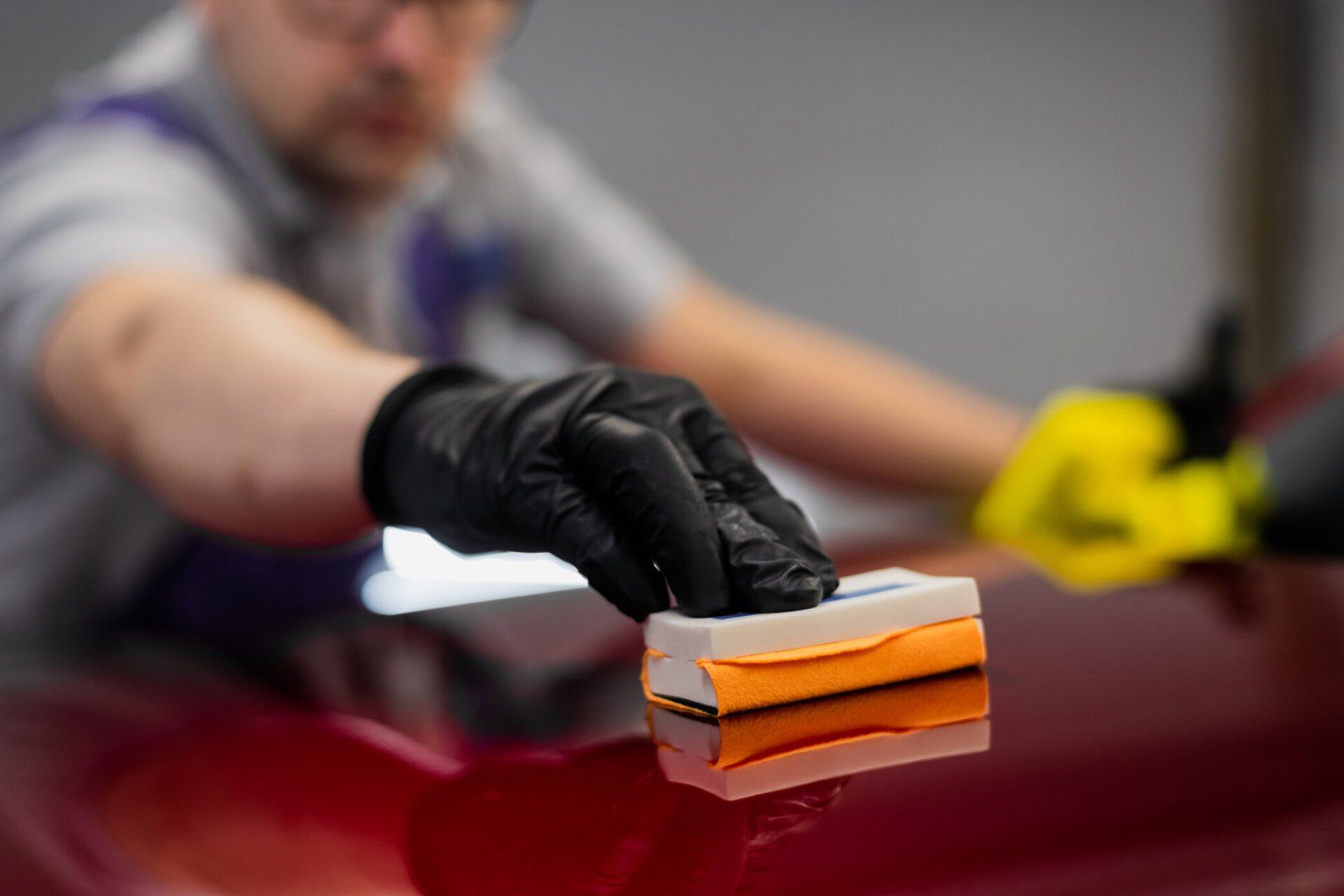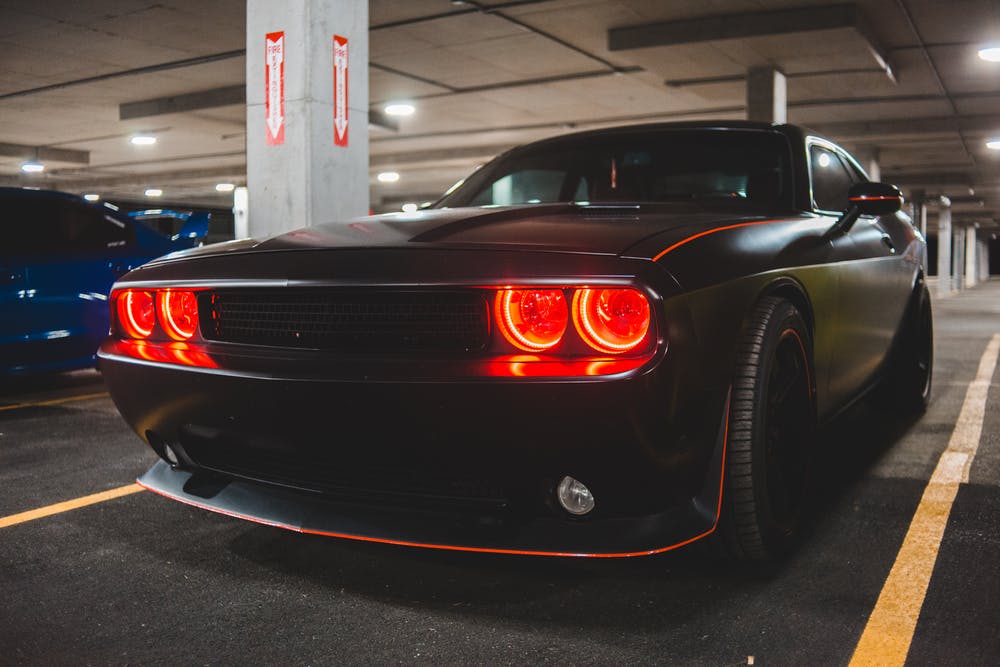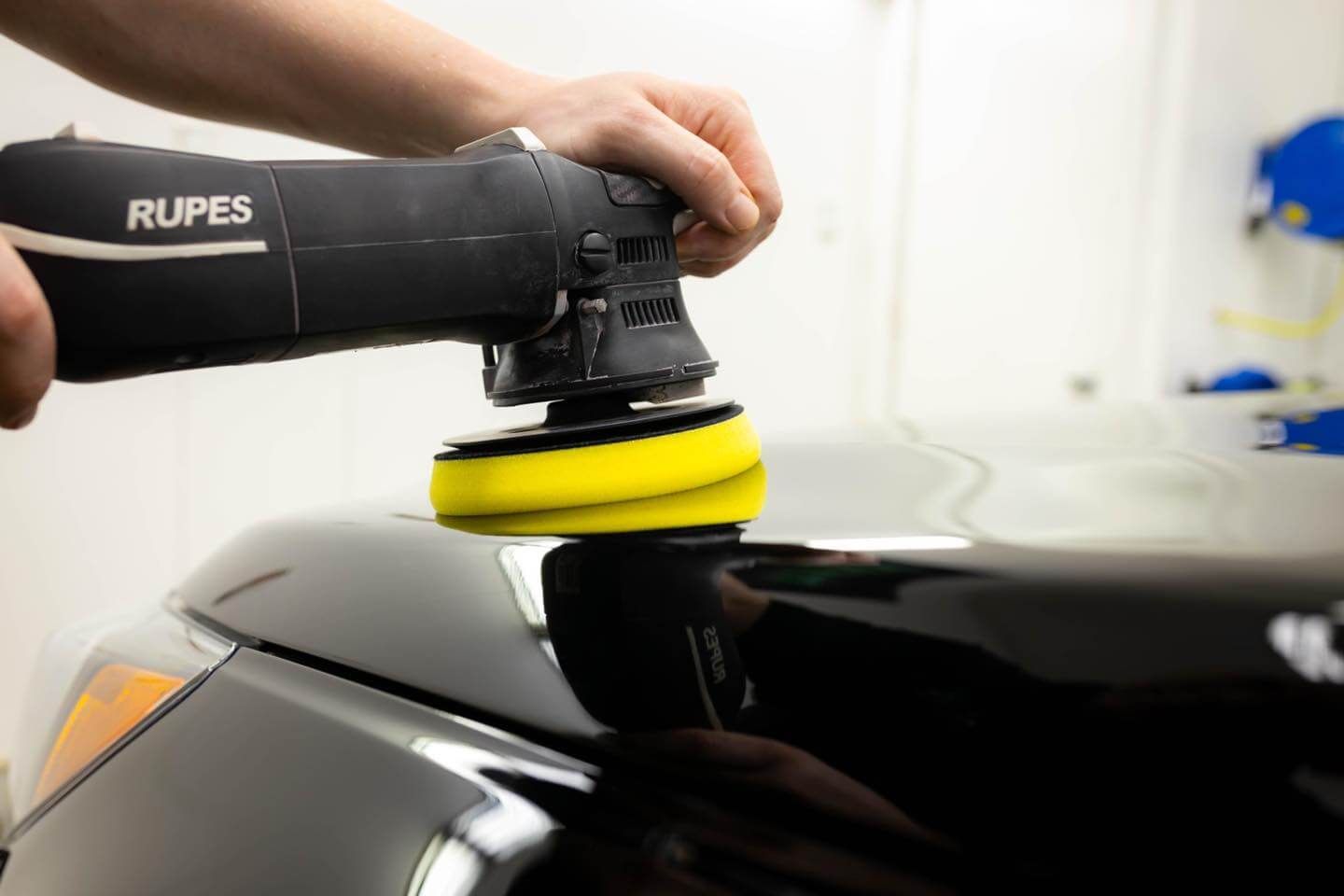The curing of a ceramic coating usually attains its peak strength in about two weeks. This stage, where the coat hardens into a tough barrier, boosts the paint's defense against dirt from the environment and harmful sun rays. However, factors like the specific product used, how it was applied, and where you are in terms of weather conditions can alter this timing. Hence, it's really important to stick closely to what the maker of that particular coating instructs you to do. Let's dive deeper into the ceramic coating cure time process and its influencing factors.
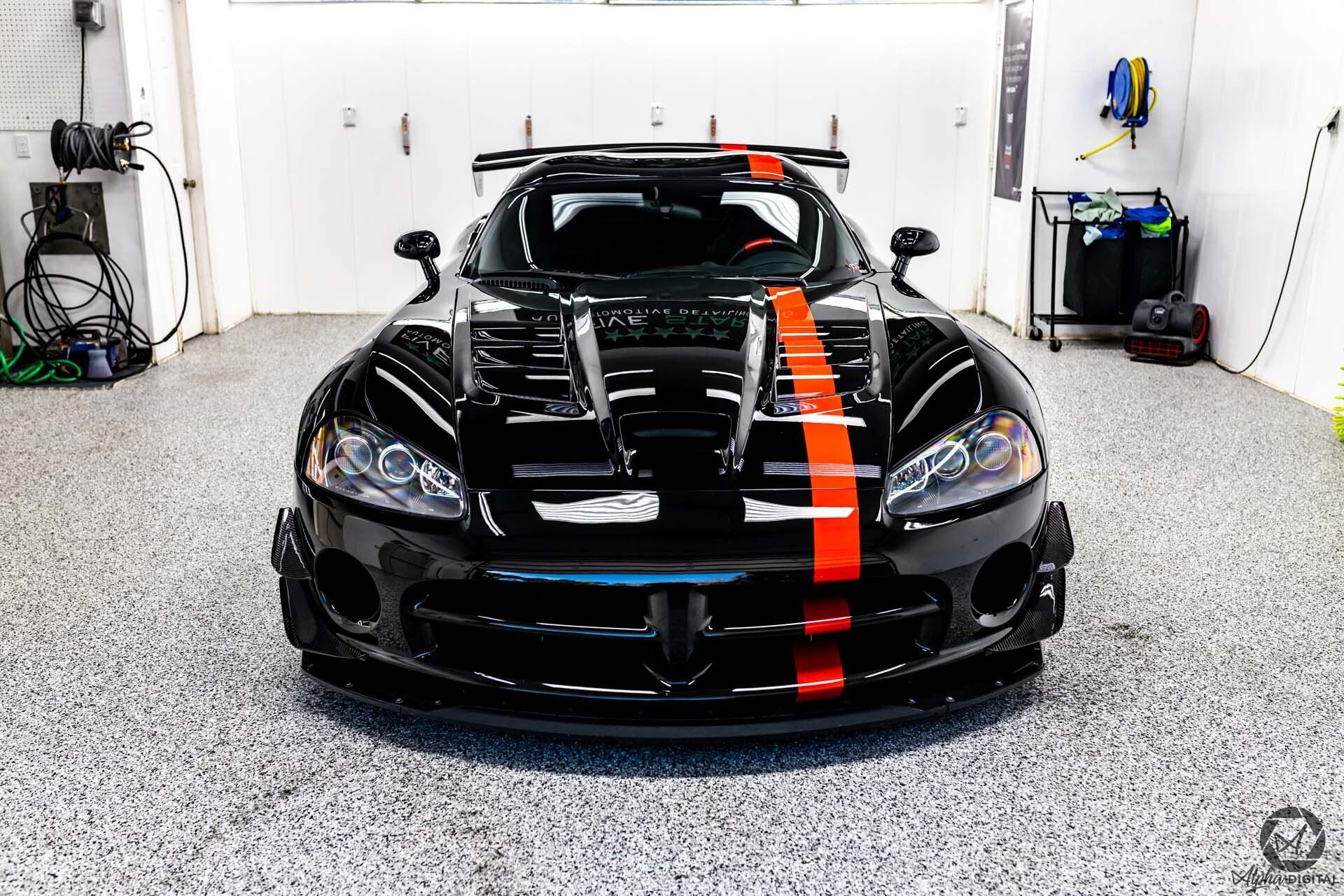
The Ceramic Coating Curing Process
The curing process is essentially the phase where the magic happens. This is when the liquid ceramic coating solidifies into a durable protective layer that adheres to the surface of your vehicle. It's like turning a soft, raw material into a hard armor that shields your car's paint from the world.
Curing times can vary depending on several factors, including the specific product used, the application technique, and environmental conditions. Generally, ceramic coatings can take around two weeks to fully cure, but this duration can range from 24 hours to 3 weeks. Temperature, humidity, dust, rain, sun exposure, and cold weather all play significant roles in determining the actual cure time.
For instance, high temperatures can speed up drying and shorten curing times, allowing the coating to harden faster and become fully effective sooner. Conversely, cool temperatures can slow down the curing process. Dust settling on the coating during curing can create imperfections that compromise its effectiveness. Environmental considerations are crucial in ensuring an optimal curing outcome.
Consider that dust isn't the only thing that could affect how well your ceramic coating cures; rain during the critical curing period can cause water spots on the surface, impacting the look and performance of the coating. Prolonged exposure to intense UV rays during the curing process can also cause issues. Direct sunlight might seem like a bonus for drying coatings quickly, but it's actually a double-edged sword. Too much sun exposure can cause uneven application or even prematurely dry the coating before it has settled properly.
Understanding these nuances in the ceramic coating curing process will help you make informed decisions regarding when and how to apply ceramic coatings, ensuring their maximal durability and effectiveness on your vehicle's surface.
Things That Impact Ceramic Coating Cure Time
So, you've gone through the meticulous process of ceramic coating your car, truck, or motorcycle. Whether you did it yourself or had it professionally applied, the next question that naturally arises is: How long do you need to wait before the coating is fully cured?
Different Curing Times and Variables
The common timeframe for most ceramic coatings to completely cure and lock in their maximum protective properties and durability is around two weeks. However, this timeframe isn't set in stone and can vary based on a few key factors:
- Product or Brand: Variations in chemical composition and formulation may lead to different cure times.
- Application Technique: Cutting-edge application techniques and tools can impact how effectively the coating binds and cures onto the vehicle's surface.
- Environmental Conditions: Factors like temperature, humidity levels, dust exposure, rain, sun, and cold weather can affect how quickly the ceramic coating cures.
Dealerships and professional auto detailing shops invest in state-of-the-art tools, such as infrared curing lamps, which accelerate the curing process and ensure an even layering of the coating. This highlights not only the importance of using high-quality products but also having them applied meticulously to reap the maximum benefits from the coating.
Environmental conditions play a significant role in curing time as well. For example:
- High temperatures tend to speed up drying and shorten curing time.
- Dust settling on the coating during curing can create imperfections that compromise its effectiveness.
- Prolonged exposure to intense UV rays during the crucial initial curing period can cause uneven application or premature drying.
- In cold weather, ceramic coating cure time slows down, and excessively low temperatures render the coating useless.
While you can't control nature, there are certain steps you can take to optimize the curing process and ensure an even, durable finish:
- Thoroughly prepare your vehicle for coating application to create an ideal surface for bonding.
- Keep your vehicle indoors during the curing period to protect it from dust, rain, and intense sunlight.
- Consider temperature and humidity levels, as they directly impact drying time and quality.
- Ensure proper ventilation during the application and drying stages.
- Follow manufacturer's recommendations for application techniques and environmental considerations.
Understanding these critical nuances of curing time will guide you in practicing patience while being mindful of factors that influence this pivotal stage in ensuring your ceramic coating reaches its full potential.
Major Variables Impacting Curing Time
When it comes to the ceramic coating cure time, several variables can influence the process, affecting how long it takes for the coating to fully cure. Let's explore some of the most significant factors that can impact the curing time.
Temperature
The temperature plays a crucial role in the drying and curing processes of ceramic coatings. High temperatures can significantly expedite the curing process, accelerating the overall cure time. In contrast, cold weather has the opposite effect, slowing down the curing process. At excessively low temperatures, the curing process may become so sluggish that it renders the coating ineffective. Therefore, maintaining an optimal temperature during application and curing is vital for achieving the best results from the ceramic coating.
When subjected to higher temperatures, ceramic coatings dry and cure more rapidly, which can be advantageous in expediting the process and enabling a quicker turnaround time for application. On the other hand, during colder conditions, particularly in winter or in regions with cooler climates, the curing process may stagnate, prolonging the amount of time required for the coating to achieve a full cure. As a result, fluctuating temperatures can pose challenges for ensuring consistent and efficient curing across different environmental conditions.
Environmental Elements
In addition to temperature, environmental elements such as dust particles settling on the coating during the curing phase can have a notable impact on the final quality of the ceramic coating. Dust settling on the coating surface while it's still curing can lead to imperfections that compromise its overall effectiveness. This underscores the importance of maintaining a controlled environment throughout the entire curing process. By minimizing exposure to external elements like dust and debris, detailed attention to environmental conditions supports the production of high-quality, flawlessly cured ceramic coatings.
Creating an enclosed or semi-enclosed space without exposure to outdoor elements can greatly enhance the quality of your ceramic coating by preserving its integrity and preventing potential imperfections caused by airborne particles.
Indeed, understanding these variables that influence curing time empowers you with valuable knowledge for optimizing the application and
maintenance of ceramic coatings. By remaining alert to these factors and adjusting your approach accordingly, you'll be better equipped to achieve superior results in your detailing endeavors.
Understanding how various factors impact curing time lays a solid foundation for exploring how multiple layers of coating affect this critical aspect of ceramic coating technology.
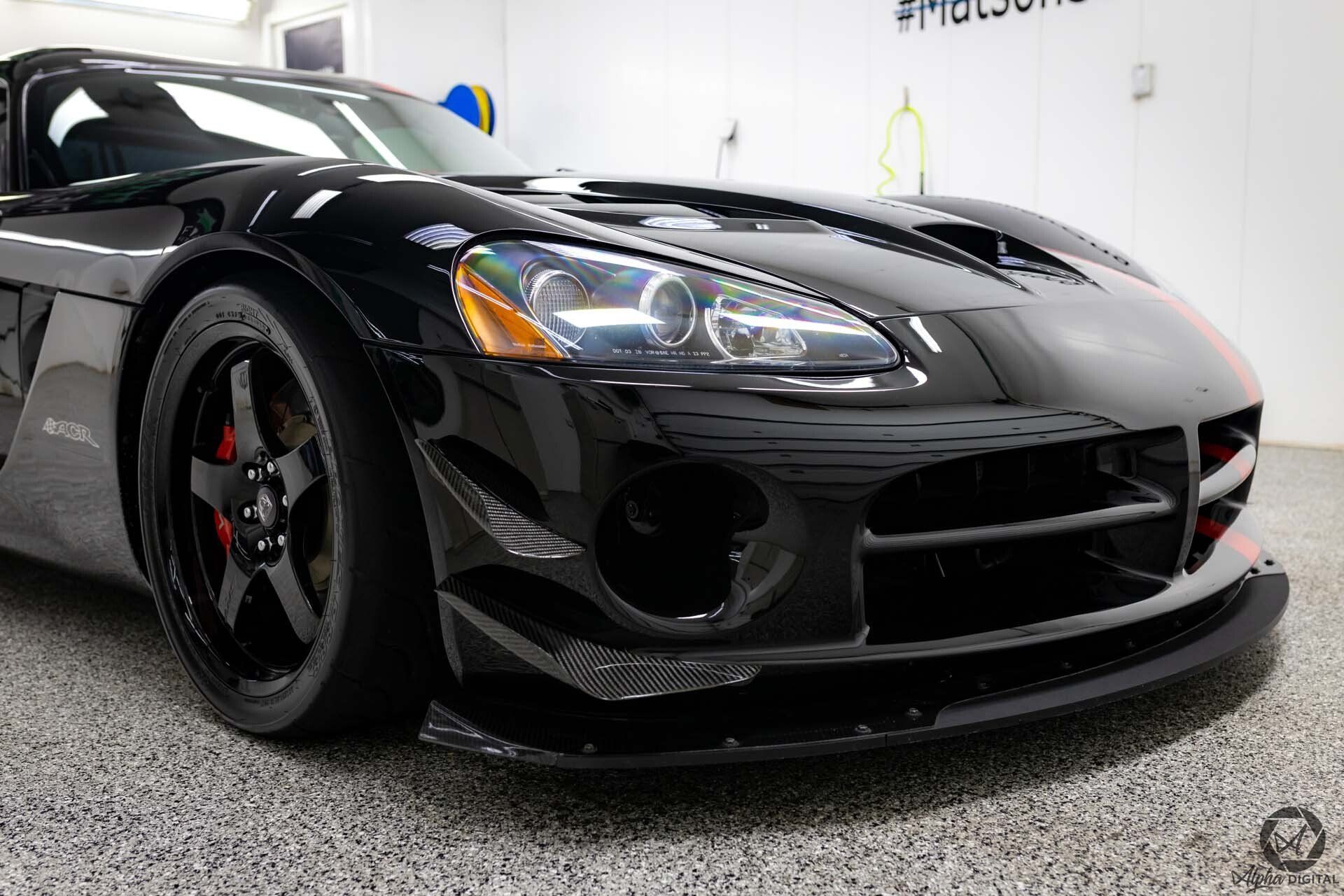
Influence of the Number of Coating Layers on Curing Time
In the world of ceramic coatings, the application process isn't solely about speed—it's about optimal protection and durability. The number of layers you apply to your vehicle plays a significant role in determining not only the curing time but also the overall effectiveness of the coating. While it may be tempting to rush through the process, especially when applying multiple coats, patience is key to achieving the best results.
Each layer of ceramic coating needs to cure individually before the next one is added. Remember, each layer requires sufficient time to properly bond with the surface of your vehicle. Rushing through or applying subsequent layers before the previous ones have fully cured can compromise the coating's quality and ultimately lead to premature failure.
While additional layers may prolong the application process, they contribute significantly to enhancing the protective capabilities of the coating. Essentially, multiple layers act as an added defense against environmental hazards, UV rays, dirt, and other contaminants. This means that, while it may seem inconvenient at first glance, investing in multiple layers pays off in terms of long-term protection for your vehicle's exterior.
Furthermore, a multi-layered application makes it easier to maintain and repair any damage in the future. The thicker protective shield created by multiple layers increases the tolerance for abrasions, reducing the likelihood of damage reaching the actual paint surface.
However, it’s important to note that patience during application is essential since proper curing between each layer ensures maximum adhesion to your vehicle’s surface.
Understanding how multiple coating layers influence curing time underscores the significance of allowing adequate time for each layer to cure completely before applying subsequent coats. This attention to detail amplifies both short-term and long-term protective benefits for your vehicle's paintwork. Learn more about the
benefits of ceramic coating!
Role of Surface Temperature and Conditions in Coating Cure Time
Picture this: as you apply a protective layer to your car's paint job via ceramic coating, the sun is beaming down on your car during the drying phase. While it may seem like an ideal setting for drying, the reality is quite different. Surface temperature plays a pivotal role in the curing process of ceramic coatings. A swift cure due to high temperatures or direct sunlight exposure can lead to undesirable outcomes.
First, consider direct sunlight. Its intense UV rays can accelerate the drying process, leaving no time for the essential chemical reaction needed for the coating to evenly form its protective layer.
Further, varying temperatures have varied effects on curing time. High temperatures can lead to premature drying and uneven application, while cold weather can significantly slow down curing times, making the coating ineffective.
Frequent temperature fluctuations can jeopardize the integrity of the curing process, resulting in uneven application and undermining the long-term protective effects of the ceramic coating. Therefore, maintaining optimal conditions during the cure time is crucial for its longevity and effectiveness.
For example, applying a ceramic coating on a chilly day requires finding an indoor space with a controlled temperature to ensure suitable conditions for proper curing. It's all about granting this robust sealant time and optimal conditions to bond securely with your car’s exterior.
Precautions While Driving Your Car Before it's Fully Cured
As tempting as it may be to take your freshly coated car for a spin, it's crucial to understand that the curing process is still ongoing. The initial few days after the ceramic coating has been applied are critical for its effectiveness and longevity. During this period, the coating is in the delicate stage of bonding with the paintwork and solidifying its protective layer. Therefore, minimizing driving before it's fully cured can significantly impact its overall durability and performance.
One primary reason for avoiding driving during the curing phase is to prevent exposure to various environmental elements that can interfere with the process. Dust settling on the coating can create imperfections that compromise its effectiveness, affecting both its appearance and protective properties. Similarly, rainwater can cause water spots on the coating, resulting in uneven application and potentially compromising its defensive capabilities.
Furthermore, intense UV rays during the critical curing period can also lead to premature drying or uneven application of the coating.
It's essential to recognize that these environmental factors are beyond our control and can impede the ceramic coating's ability to form a robust protective barrier for your vehicle. Therefore, exercising caution and limiting exposure to these elements during the curing period is a proactive approach to ensuring optimal results from the ceramic coating application.
In addition to mitigating exposure to environmental elements, refraining from driving during the cure time serves another crucial purpose: allowing the ceramic coating to harden and become a resilient shield for your vehicle. This hardening process is vital for establishing a durable protective layer on your car's paintwork, enhancing its resistance to fading and chemical contaminants.
Moreover, adhering to precautions while driving before the ceramic coating is fully cured contributes to prolonging its lifespan and maximizing its protective properties. By protecting the coating during this critical phase, you are actively investing in the long-term preservation of your vehicle's exterior and ensuring that it maintains its pristine appearance and superior defense against environmental hazards.
Understanding these precautions and being mindful of how environmental elements can impact the curing process empowers you to make informed decisions about driving your car after a ceramic coating application. Practicing patience during this stage will ultimately yield significant benefits in terms of the coating's durability and long-term effectiveness.
For expert care and ceramic coating applications for your vehicle, feel free to contact us today at Five Star Automotive Detailing, where our team stands ready to address all your detailing needs. Make sure your investment gets what it deserves!


